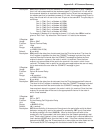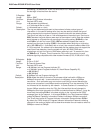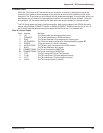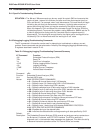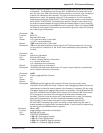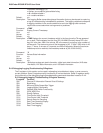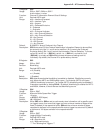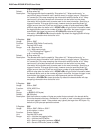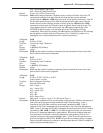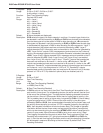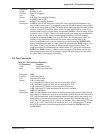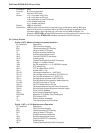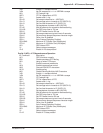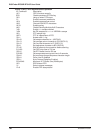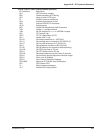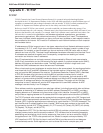
Appendix D - AT Command Summary
RF300E/RF310E 155
bit 4—Save logging (>Sn) flags,
bit 5—Allow tst_CheckPoint() calls
Default: 7 (Init Log, Init EPA, Save to Log)
Description: S99 controls startup features. If buffers are set to not be initialized, then if the TA
resets those buffers will not be initialized and thus the data can be retrieved
(assuming that >S99=0 or >D99 were given prior to the reset or fatal error). If the TA
will be reset several times, but the data should be kept after each reset, then the
buffers should not be initialized (except to initially give the >S99=0 and/or >D99
command) and the save to EPA and/or save to Log bits would need to be set. The
“Save logging flags” bit when set will store the >Sn logging flag settings in the
E2PROM so that on power-up those flags will be set and logging can begin
immediately. When the bit is cleared, the >Sn flags are not modified nor will the flags
be changed from default when the TA powers up. tst_CheckPoint() helps in the
debugging of an unrecoverable fatal error or power-up problem.
S-Register: S100
Usage: S100=n; S100?
Function: Flow Control High Threshold
Unit: 1 buffer
Range: n=0-255 (0-255 buffers)
Default: varies
Description: S100 may be used to increase or decrease the high threshold for flow control (the
point at which flow control is asserted).
S-Register: S101
Usage: S101=n; S101?
Function: Flow Control Low Threshold
Unit: 1 buffer
Range: n=0-255 (0-255 buffers)
Default: varies
Description: S101 may be used to increase or decrease the low threshold for flow control (the
point at which flow control is negated).
S-Register: S102
Usage: S102=n; S102?; S102.b=n; S102.?
b=bit number, n=value
Function: Data to Save for Decoding
Unit: Decimal ASCII code
Range: bit 0—Layer 1
bit 1—Layer 2 (D)
bit 2—Layer 3 (D)
bit 3—B1
bit 4—B2
bit 5—Async Port 1
Default: 127 (Layer 1, Layer 2, Layer 3, B1, B2, Async Ports 1)
Description: S102 allows complete control over the types of data stored in RAM for decoding at a
later time and/or the types of data allowed for Real-Time Decoding. “Layer 1”
consists of the I.430 state transitions and events (decoded by >D8). “Layer 2”
consists of the Q.921 messages sent and received on the D-channel (decoded by
>D2). “Layer 3” consists of the Q.931 messages sent and received on the D-channel
(decoded by >D3, >D38, or >D39). B1 consists of digital data sent and received on
B-channel 1 (decoding depends on data protocol). B2 consists of digital data sent
and received on B-channel 2 (decoding depends on data protocol). Async Port 1
consists of data sent and received between port 1 of the TA and the asynchronous
terminal (decoded by >D5 if PPP). S102? will give bit-level details of this S-register.
Refer to the >Dn command for details on decoding data stored in RAM. By default all
options (bits) are enabled (set to 1).



